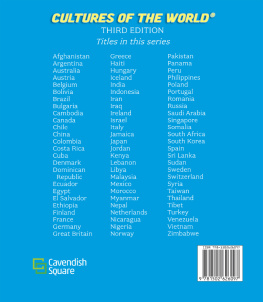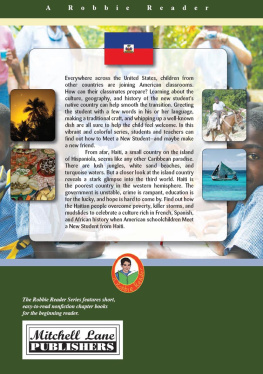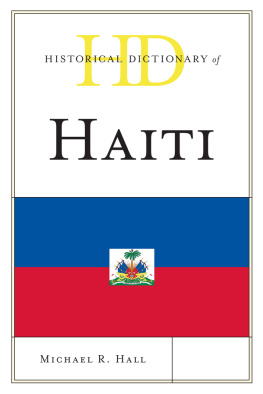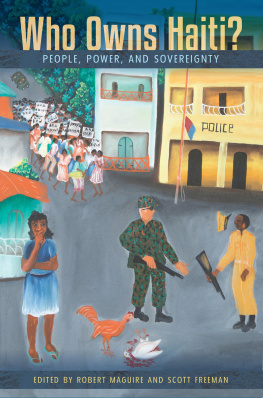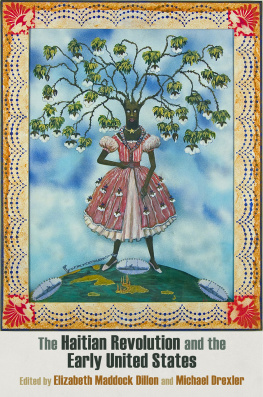
Published in 2020 by Cavendish Square Publishing, LLC
243 5th Avenue, Suite 136, New York, NY 10016
Copyright 2020 by Cavendish Square Publishing, LLC
First Edition
No part of this publication may be reproduced, stored in a retrieval system, or transmitted in any form or by any means electronic, mechanical, photocopying, recording, or otherwisewithout the prior permission of the copyright owner. Request for permission should be addressed to Permissions, Cavendish Square Publishing, 243 5th Avenue, Suite 136, New York, NY 10016. Tel (877) 980-4450; fax (877) 980-4454.
Website: cavendishsq.com
This publication represents the opinions and views of the author based on his or her personal experience, knowledge, and research. The information in this book serves as a general guide only. The author and publisher have used their best efforts in preparing this book and disclaim liability rising directly or indirectly from the use and application of this book.
All websites were available and accurate when this book was sent to press.
Library of Congress Cataloging-in-Publication Data
Names: Mattern, Joanne, 1963- author.
Title: Haiti / Joanne Mattern.
Description: First edition. | New York: Cavendish Square, [2020] | Series: Exploring world cultures | Includes bibliographical references and index. | Audience: Grades 2-5. Identifiers: LCCN 2019015211 (print) | LCCN 2019015452 (ebook) | ISBN 9781502651792 (ebook) | ISBN 9781502651785 (library bound) | ISBN 9781502651761 (pbk.) | ISBN 9781502651778 (6 pack) Subjects: LCSH: Haiti--Juvenile literature.
Classification: LCC F1915.2 (ebook) | LCC F1915.2 .M38 2020 (print) | DDC 972.94--dc23
LC record available at https://lccn.loc.gov/2019015211
Editor: Lauren Miller
Copy Editor: Nathan Heidelberger
Associate Art Director: Alan Sliwinski
Designer: Christina Shults
Production Coordinator: Karol Szymczuk
Photo Research: J8 Media
The photographs in this book are used by permission and through the courtesy of: Cover Anthony Asael/Art in All of Us/Corbis News/Getty Images; pp..
Printed in the United States of America
Contents
Introduction 
Haiti is a country in the Caribbean Sea. It shares an island with the Dominican Republic. Haiti is a small country. It is filled with mountains and valleys. There are many beautiful beaches too. The people of Haiti are called Haitians.
The island is small, but it is home to millions of people. Many Haitians live in crowded cities. Others live and work on farms in the countryside.
Haiti has an interesting history. Long ago, the country belonged to France. Then, a group of former slaves took over the government. They fought for Haiti to become an independent nation. Since then, Haiti has had many political problems. Much of the nation is very poor.
Despite this, people in Haiti work hard. They also know how to have fun. Haitians enjoy sports and games. They spend time with family and friends. They share meals and celebrate special holidays together.
Lets learn more about this interesting and beautiful land.

Haitian children play on homemade skateboards. There is not a lot of money for toys, so children make their own.
Geography 
Haiti is located on the island of Hispaniola. Haiti takes up the western half of the island. The eastern half belongs to a country called the Dominican Republic.

This map shows Haitis shape and its major cities.
The rest of Haiti is surrounded by water. The Atlantic Ocean lies to the north. The Gulf of Gonve lies to the west. Gonve Island is located here. Two stick out into the sea around the Gulf of Gonve. To the south is the Caribbean Sea.
FACT
The island of Tortuga lies just off of Haitis northern coast. Long ago, pirates used to hide on this island.
Hot and Wet Weather
Haiti has a tropical climate. This means the island is very hot and humid. It rains a lot in the spring and fall.

There are many small islands, like this one, in the Gulf of Gonve.
In all, Haiti covers 10,714 square miles (27,750 square kilometers). It is about 55 miles (89 kilometers) from Cuba. A narrow strip of water called the Windward Passage lies between the two countries.
History 
The Taino people lived in Haiti first. Then, in 1492, Christopher Columbus arrived on Hispaniola. He claimed the island for Spain.

Dictator Jean-Claude Duvaliers family ruled Haiti for generations.
In 1697, Spain gave the western part of the island to France. France called its new Saint-Domingue. Thousands of Africans were sent to Haiti to work as slaves. They grew sugarcane and coffee.
FACT
The United States Haiti between 1915 and 1934.
Behind the Name
Haiti is a Taino word that means land of high mountains. It was the original name for the island of Hispaniola.
In 1791, a former slave named Toussaint Louverture led a against France. Haiti finally became independent in 1804. Jean-Jacques Dessalines became the first ruler of Haiti. He was killed in 1806. This sparked many years of fighting for control of the government.
The Duvalier family ruled Haiti as from 1957 to 1986. In 1990, Jean-Bertrand Aristide was elected president by the people. However, things still have not improved politically in Haiti.
Government 
Haiti wrote a new in 1987. It divided the government into three parts. These are the executive, legislative, and judicial branches.

President Jovenel Mose
The executive branch is led by the president. Haitis president is elected to a five-year term. He or she cannot serve more than two terms. The executive branch also includes the prime minister and a cabinet that advises the prime minister.
FACT
Haiti has more than fifty recognized political parties.
Going to Court
Most cases in Haiti are decided by a judge. It is hard for people to get a fair trial. This is because poor people cannot afford lawyers.

A Court of Cassation judge reads a decision.
The legislative branch is called the National Assembly. It is divided into the Senate and the Chamber of Deputies. Members of the National Assembly make the laws.
Next page


